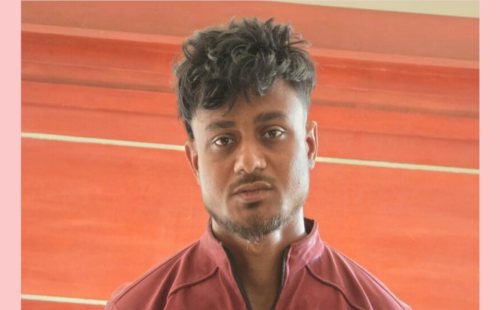Ukraine’s peace lies in compromise

Peace
remains elusive in Ukraine. The recent round of meetings between world leaders
in Washington, DC, has not moved the needle significantly. Russia's President
Vladimir Putin offered potential concessions at a summit with his US
counterpart Donald Trump, but Ukraine's President Volodymyr Zelenskyy has yet
to indicate any willingness to relinquish the commitments he sought from the
West before the war began.
To sum up the current
stalemate: despite repeated attempts at negotiation, a lasting and
comprehensive peace agreement remains difficult to achieve because of the
conflicting goals of the warring parties—Russia and Ukraine—as well as those of
the US and European countries supporting Ukraine. The next few weeks will
reveal whether all these efforts have been in vain.
For readers
who have not followed recent developments, a flurry of activity has taken place
to bring about a ceasefire, but it is too early to predict the outcome. War,
negotiations, and deals are all still on the table. The first step was a meeting in
Alaska's Anchorage between Putin and Trump, followed by a gathering of European
leaders in Washington, DC.
Unfortunately, we cannot
expect major breakthroughs in the coming days. It is possible that Trump, who
calls himself a dealmaker, might manage to pull a rabbit out of the hat and
broker a deal. The final outcome depends on bilateral discussions between Putin
and Zelenskyy, with Trump present there. One outlandish scenario imagines Trump
escorting them to the Hall of Mirrors (Galerie des Glaces) at the Palace of
Versailles, locking the doors, and throwing away the key.
Many
questions arise: who is to blame for this protracted war? Why did the latest
peace initiative fail? What must the key players concede to achieve lasting
peace? The shortest answer to all these questions is: it depends on whom you
ask. Tens of thousands of people have died since Putin sent in the troops in
2022 and started the war,
but others share the blame for goading him into invading Ukraine. A lasting
peace in the near future appears unlikely. Russia will not sign any agreement
unless Ukraine compromises on its territorial integrity and abandons its
ambition to join NATO.
President Trump recently posted on
his social media platform, Truth Social, that President Zelenskyy could end the
war by ceding Crimea and renouncing NATO membership.
Ukraine needs to forgo NATO
membership. European countries can provide security guarantees with or without
US involvement. Trump has repeatedly expressed his reservations about further
entanglement in European politics. When European leaders rushed to Washington
after Zelenskyy's invitation following the Alaska summit, they were briefed on
what Ukraine's allies needed to do to reassure Zelenskyy and avert World War
III.
When we were in high school,
one of the most common questions in the Secondary School Certificate (SSC)
examination was: "What are the causes of World War II?" If you asked
American high school graduates, most would profess ignorance. But my cohort in
the 1970s would unanimously reply, "There are many causes..." and
then list all the warring countries. The situation in Europe now feels no
different.
By all
accounts, the historic meeting between Putin and Trump was a positive
initiative. The war in Europe might have been averted had former US President
Joe Biden not been incapacitated during the final two years of his ill-fated
presidency. His advisers kept him away from major negotiations with China and
Russia.
Before Biden, various US
presidents had respected an unwritten understanding between Russia and the West
that Ukraine would not be invited to join NATO. Some analysts argue that the
Barack Obama administration underestimated Russia's determination to prevent
NATO's further eastward expansion. Since the mid-1990s, Russian leaders have
adamantly opposed NATO enlargement. Yeltsin, Putin, and Medvedev never
hesitated to convey Russia's resolve to keep Ukraine out of NATO and its
long-term intentions regarding potential conflicts. Ukraine's leaders have also
vacillated in their determination to join NATO.
Trump has indicated a
preference for Europe to take the lead in providing security guarantees for
Ukraine, with US assistance and coordination, rather than extending NATO's
collective defence umbrella (Article 5) to Ukraine.
According to Article 5 of NATO,
an armed attack against one member is considered an attack against all. This
means that if one NATO member is attacked, all others are obligated to assist,
taking necessary action, including armed force, to restore and maintain
security in the North Atlantic area. Russia allowed the Warsaw Pact (NATO's
counterweight) to lapse on the assurance that Ukraine would not become a
Western military bastion.
More than a decade ago, John
J Mearsheimer, the R Wendell Harrison Distinguished Service Professor at the
University of Chicago, wrote a prescient analysis of the Ukrainian crisis
in Foreign Affairs. In his article, "Why the Ukraine
Crisis Is the West's Fault," he foreshadowed every major
mistake the Western alliance would make after the Soviet collapse.
Many in the West now
recognise that NATO expansion was "the central element of a larger
strategy to move Ukraine out of Russia's orbit and integrate it into the
West," as Mearsheimer wrote. This move clearly provoked Russian
opposition. For Putin, the overthrow of Ukraine's democratically elected,
pro-Russian president Viktor Yanukovych in 2014 was the last straw. The Orange
Revolution was the red flag that pushed Russia to initiate its do-or-die plan
to forestall NATO expansion.
Where do we stand now? An
optimistic assessment suggests a deal could freeze the current front line
Donbas—stretching roughly 620 miles from northeastern Ukraine to its Black Sea
coast—without Ukraine officially ceding the land on the other side. After that,
a bilateral or trilateral summit could work towards a permanent truce,
withdrawal of forces, security guarantees for Ukraine, and, akin to the Korean
model, a demilitarised zone along a yet-to-be-determined front line.
Dr Abdullah Shibli is an economist working at a non-profit
financial intermediary in the US. He previously worked for the World Bank and
Harvard University.
















